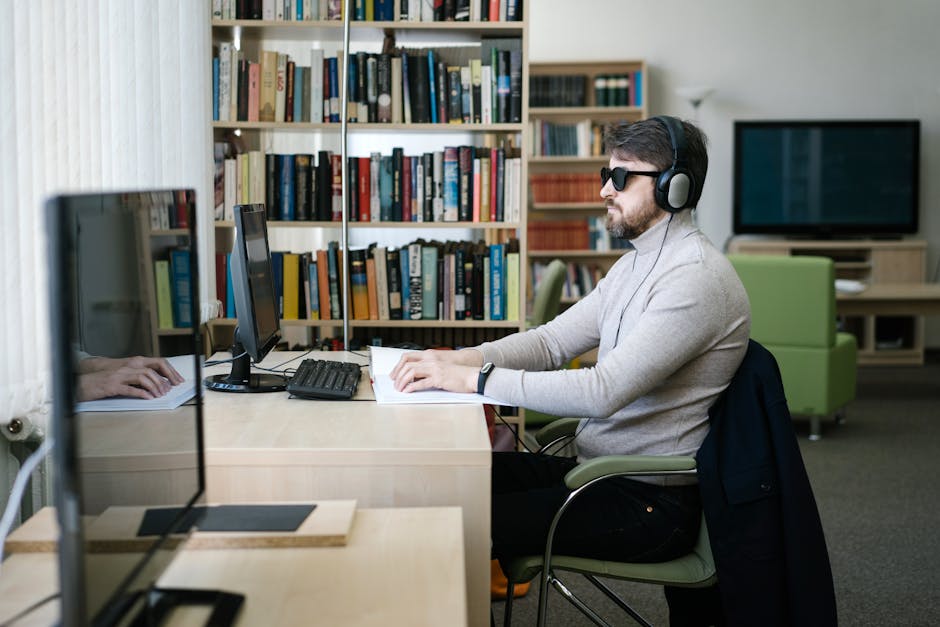Tips for Reducing Digital Eye Strain: A Comprehensive Guide
As we spend more time in front of screens, whether for work, entertainment, or communication, the prevalence of digital eye strain has become a common concern. Also known as computer vision syndrome, this condition can lead to a variety of uncomfortable symptoms such as eye strain, headaches, dry eyes, and blurred vision. In this article, we will explore various tips and strategies to help reduce digital eye strain and promote healthier vision. Let’s delve into the world of digital eye strain and discover ways to protect our eyes in the digital age.
The Impact of Digital Devices on Our Eyes

In today’s digital age, our reliance on smartphones, computers, tablets, and other electronic devices is greater than ever. According to a report by The Vision Council, nearly 80% of adults report using digital devices for more than two hours per day, with one-third using them for more than nine hours a day. This prolonged exposure to screens can have a significant impact on our eyes and overall vision health.
Understanding Digital Eye Strain

Digital eye strain is a condition that results from extended use of digital devices. The symptoms of digital eye strain can vary from person to person but commonly include:
- Eye fatigue and discomfort
- Headaches
- Dry eyes
- Blurred vision
- Neck and shoulder pain
These symptoms can significantly impact our daily lives and productivity, making it essential to take proactive measures to reduce digital eye strain.
1. Adjust Your Screen Settings

One of the most straightforward ways to reduce digital eye strain is to adjust the settings on your digital devices. Proper screen brightness, contrast, and font size can make a significant difference in reducing eye strain. Consider the following tips:
- Adjust the brightness of your screen to match the ambient lighting in your environment.
- Reduce glare by positioning your screen away from windows or using an anti-glare screen protector.
- Increase text size to reduce the strain on your eyes when reading.
By making these simple adjustments, you can create a more comfortable viewing experience and reduce the risk of digital eye strain.
2. Follow the 20-20-20 Rule

The 20-20-20 rule is a popular technique for reducing eye strain and preventing eye fatigue. The rule is simple: every 20 minutes, take a 20-second break and look at something at least 20 feet away. This practice helps to relax the eye muscles and reduce the strain caused by prolonged screen time.
By incorporating the 20-20-20 rule into your daily routine, you can give your eyes the rest they need to stay healthy and comfortable throughout the day.
3. Practice Proper Ergonomics
Proper ergonomics can play a significant role in reducing digital eye strain. Ensure that your workstation is set up in a way that promotes good posture and reduces strain on your eyes and body. Consider the following tips:
- Position your screen at eye level to reduce neck strain.
- Place your screen at arm’s length away to reduce eye strain.
- Use a chair with adequate back support to maintain good posture.
By paying attention to ergonomics, you can create a more comfortable and sustainable work environment that promotes healthier vision.
4. Use Blue Light Filters
Blue light emitted from digital devices has been linked to an increased risk of digital eye strain and disrupted sleep patterns. To reduce the impact of blue light on your eyes, consider using blue light filters or blue light glasses. These filters can help reduce the amount of blue light that reaches your eyes, minimizing eye strain and discomfort.
Many devices also have built-in blue light filter settings that can be activated to reduce the amount of blue light emitted from the screen. By incorporating blue light filters into your daily routine, you can protect your eyes from the harmful effects of blue light exposure.
5. Take Regular Breaks
In addition to following the 20-20-20 rule, taking regular breaks from your digital devices can help reduce eye strain and prevent fatigue. Incorporate short breaks into your workday to give your eyes a chance to rest and rejuvenate. Use this time to stretch, walk around, or engage in activities that don’t involve screen time.
By giving your eyes regular breaks, you can reduce the strain caused by prolonged screen use and promote overall eye health.
Common Misconceptions about Digital Eye Strain
There are several misconceptions surrounding digital eye strain that can lead to misinformation and ineffective strategies for prevention. One common misconception is that using screens in dark mode reduces eye strain. While dark mode may reduce the overall brightness of the screen, it does not eliminate the impact of blue light or screen glare, which are significant contributors to digital eye strain.
It’s essential to be aware of these misconceptions and focus on evidence-based strategies for reducing digital eye strain.
Conclusion
In conclusion, digital eye strain is a prevalent condition that can have a significant impact on our daily lives and overall well-being. By implementing the tips and strategies discussed in this article, such as adjusting screen settings, following the 20-20-20 rule, practicing proper ergonomics, using blue light filters, and taking regular breaks, you can reduce the risk of digital eye strain and promote healthier vision.
Remember that prevention is key when it comes to digital eye strain, so be proactive in implementing these tips into your daily routine. Your eyes will thank you for it!
Stay mindful of your screen time, prioritize eye health, and take the necessary steps to protect your vision in the digital age. By incorporating these tips into your daily life, you can reduce digital eye strain and enjoy a more comfortable and productive screen experience.
Let’s take care of our eyes and prioritize our vision health in the digital age!




